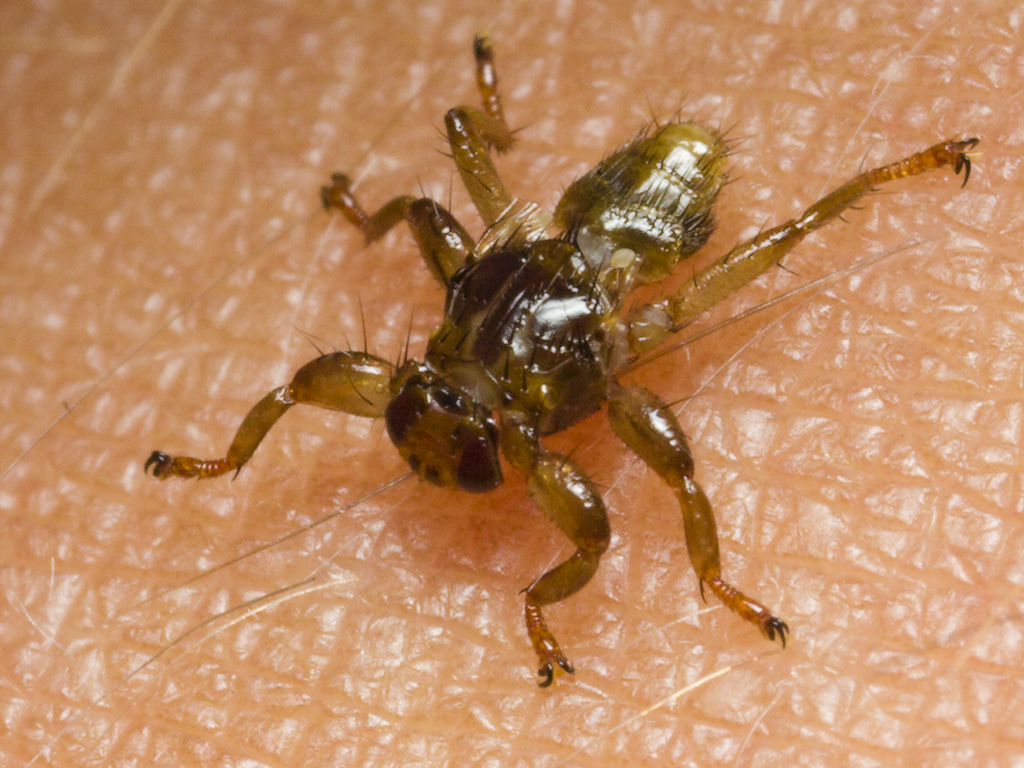
Lipoptena cervi · briedmusė
- deer ked, deer fly
- Hirschlausfliege
- briedmusė
- briežu kaulmuša
- strzyżak sarni, strzyżak jelenica
https://en.wikipedia.org/wiki/Lipoptena_cervi They are parasites of elk, deer, and other deer family members, burrowing through the fur and sucking the blood of the host animals. Their bodies are flat and elastic, making their removal difficult. L. cervi is a poor flier and can only fly for short distances. Once the insect reaches its target, it sheds its wings and starts burrowing through the fur.
Both males and females of L. cervi consume blood from their hosts. Feeding lasts 15 to 25 minutes. The female produces one larva at a time and retains the developing larva in her body until it is ready to pupate. The larva feeds on the secretions of a "milk gland" in the uterus of its mother. The female gives birth to a fully mature white prepupa. She may produce larvae for as long as 10 months. A newborn prepupa immediately darkens, forms the puparium, and begins to pupate on the forest floor, or where the deer are bedded. After pupation, the winged adult emerges and flies in search of a host. Upon finding a host, the adult fly breaks off its wings and it is permanently associated with its host.
Although their life cycle depends on deer, they may on rare occasions bite humans, producing responses ranging from unnoticeable to highly allergic. Initially, the bite may be barely noticeable and leaves little or no trace. Within 3 days, the site may develop into a hard, reddened welt. The accompanying itch is intense and typically lasts 14 to 20 days. Occasionally, an itch papule may persist for up to a year.
Kanda ir žmones, bet ligų neplatina. Nutūpusi ant aukos numeta sparnus. Lerva auga patelės kūne iki lėliukės stadijos.
0 comments
Add a comment